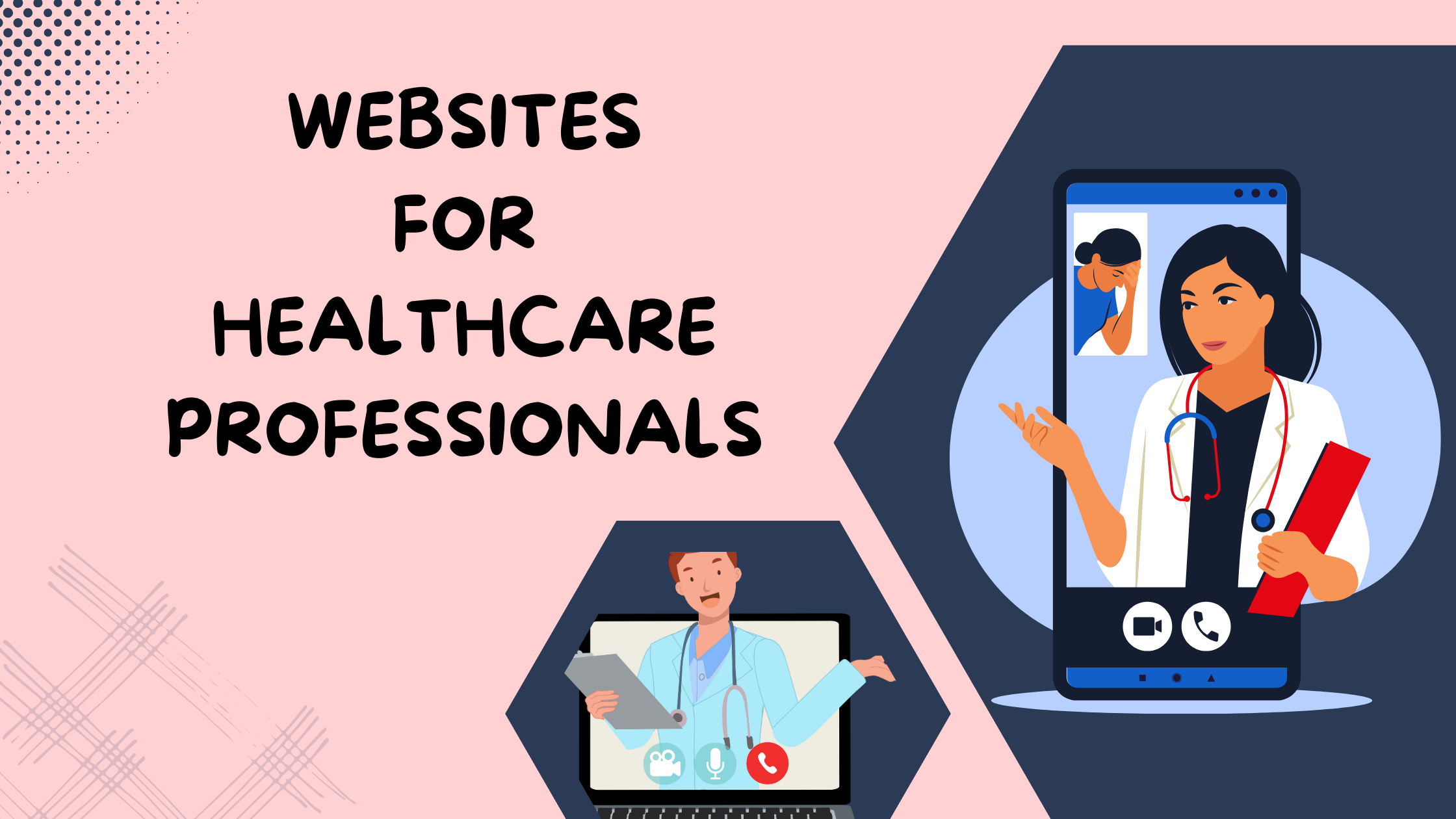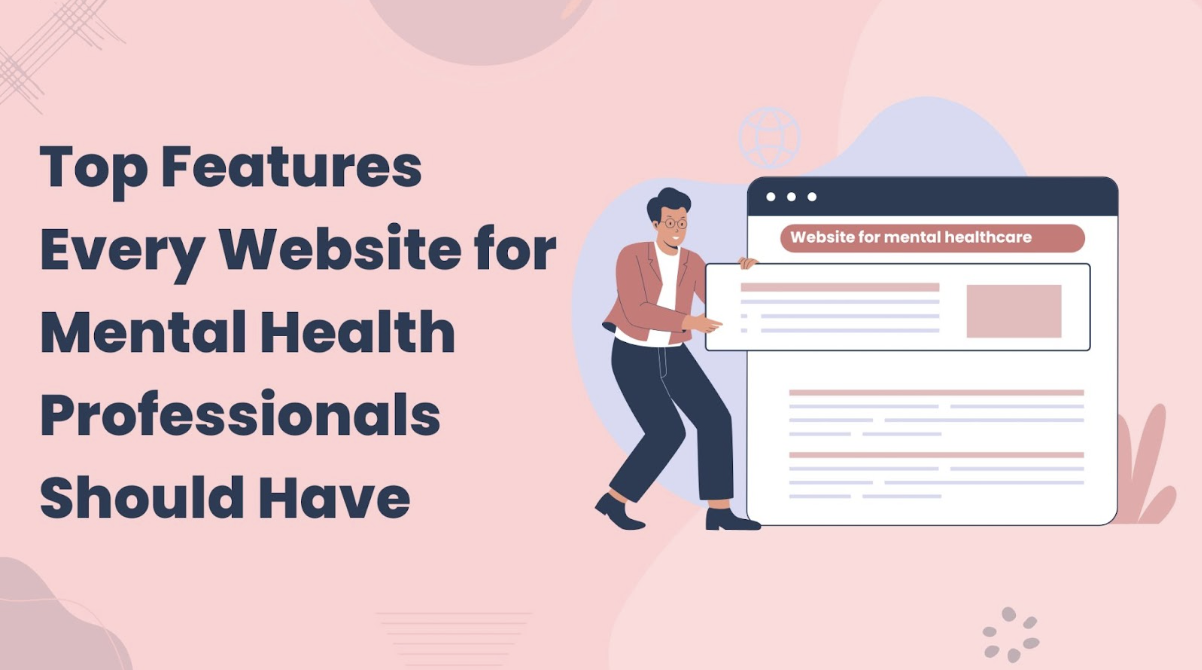How a Website Saves Time for Busy Healthcare Professionals
The way medical practices run has been completely transformed by the use of websites specifically designed for healthcare professionals, online appointment scheduling, and information sharing. This in-depth article seeks to analyze the many benefits of these tools revealing how they improve healthcare workers' overall productivity in addition to saving time.

The incorporation of technology has become a ray of hope in the complex field of healthcare, where every moment matters and professionals are under constant strain. The way medical practices run has been completely transformed by the use of websites specifically designed for healthcare professionals, online appointment scheduling, and information sharing. This in-depth article seeks to analyze the many benefits of these tools revealing how they improve healthcare workers' overall productivity in addition to saving time.
The Origin of Time-Intensive Healthcare Challenges
The Time Dilemma
Inherent Complexity: The healthcare industry is inherently complex, with professionals balancing a wide range of duties from patient care and diagnostics to managerial work and ongoing education.
Overwhelmed by Paper Trails: Professionals were frequently slowed down by laborious paperwork and manual scheduling while using traditional methods of arranging appointments and sharing information.
The Breakthrough Point: Realizing Change Is Necessary
Technology as a Game-Changer: A major change in healthcare was brought about by the discovery that technology could be used to optimize processes, with an emphasis on developing time-saving and efficiency-boosting technologies.
Online Scheduling of Appointments: A Revolution in Efficiency
The Problems with Traditional Appointment Scheduling
Manual Scheduling Problems: Evaluate the difficulties faced by medical professionals in the days before computerized records, when they had to rely on labor-intensive, error-prone manual scheduling techniques.
Administrative Overload: Consider how the administrative strain of conventional scheduling took time away from healthcare professionals' primary duties and impeded their offering of the best possible care for patients.
The Introduction of Online Scheduling for Appointments
Changing the Status Quo: The introduction of online appointment scheduling brought about a revolution in the healthcare industry by freeing experts from the limitations of manual scheduling and automating procedures.
Patient-Centric Approach: Look at how online scheduling services put the needs of their users first, giving them the freedom to make appointments whenever it suits them, which lowers the number of no-shows and raises patient satisfaction levels.

Websites Designed with Healthcare Professionals in Mind: Going Above and Beyond
The Constraints on Generalized Websites
Not Everyone Fits Into One Size: Inefficiencies may result from general-purpose servers websites' insufficient features and uniqueness in meeting the particular demands of healthcare professionals.
Security Issues: Using generic websites creates security issues, making purpose-built platforms with strong security measures necessary because patient data is of utmost value.
Customized Solutions: Healthcare Professional Niche Websites
Features & Functionalities: Examine the features that websites designed specifically for medical professionals have, such as information-sharing capabilities, appointment scheduling software, and secure patient portals.
Improving Workflow: Showcase how these websites for healthcare professionals are made to fit in perfectly with the everyday routines of professionals, increasing productivity and decreasing barrier.
Information Sharing in Healthcare: Filling in the Gaps and Strengthening Collaboration
The Need for Effective sharing of information
Collaborative Care: Highlight the value of this approach in the medical field and how efficient sharing of information is essential to reaching this objective.
Timeliness and Accuracy: Analyze how timely access to reliable information affects diagnosis, treatment strategies, and decision-making in the healthcare industry.
Conventional versus Modern Techniques for Sharing Information
The shift from paper-based to digital records should be emphasized, along with the benefits of electronic systems in terms of accuracy and accessibility.
Early Electronic Health Records' (EHRs') challenges: Recognize the initial challenges associated with early EHRs, such as interoperability problems and the need for more advancements in information sharing.
The Fusion: A complete Online Resource
Integrated Platforms for Medical Practitioners
All-inclusive Platforms: Modern internet platforms for medical professionals incorporate a variety of features, including online appointment booking, safe data exchange, and collaborative functionalities all inside a single integrated platform.
Centralized Access: By enabling healthcare personnel to retrieve patient records, appointment calendars, and other vital data from a single digital hub, workflow efficiency is increased.
Better Channels for Communication
Real-Time Collaboration: These platforms' safe messaging features enable healthcare professionals to collaborate in real-time, which promotes faster decision-making and better patient outcomes.
Integration of Telemedicine: By incorporating virtual consultations into these websites, healthcare professionals can communicate with patients from a distance, thereby reducing waiting times and increasing access to care.
Case Studies: Practical Applications
Healthcare Professionals' Success Stories
Improving Patient Care: Case studies show how medical professionals have effectively improved patient care by using websites that share information and online appointment booking.
Time-Saving Techniques: Healthcare workers have saved a great deal of time by implementing certain techniques, such as automating administrative work and streamlining channels of communication.
Overcoming Challenges and Concerns
Privacy and Security of Data
Reliable Security measures: To mitigate concerns regarding patient privacy and data security among healthcare professionals, online platforms have strong security procedures in force.
Regulation Compliance: Professionals can depend on the systems with delicate patient data when they follow healthcare rules.
Training and Adoption
Training Programs: It's critical to have training programs in place to guarantee that healthcare professionals are competent at utilizing online resources and to handle any adoption-related problems.
Overcoming Resistance: Techniques for overcoming broad resistance to technology advancements in the healthcare sector by providing assistance and education.
Future Trends and Innovations
Healthcare and Artificial Intelligence (AI)
Predictive Analytics: AI-powered predictive analytics has the potential to enhance scheduling procedures and assist medical professionals in anticipating patient requirements and effectively allocating resources.
Personalized Medicine: By assessing big data sets to customize treatment regimens and improve patient outcomes, artificial intelligence has the potential to advance personalized medicine.
Progress in Telemedicine
Remote Monitoring: Researching how telemedicine innovations combined with online tools can facilitate remote patient monitoring, eliminating the necessity for in-person visits and time savings.
Healthcare Applications of Augmented Reality (AR): Time-saving and improved efficiency can be achieved through the use of AR in training exercises and online consultations.
The Ripple Effect: Improving the Experience for Patients
Patient-Centered Outcomes
Better Access to Care: This part discusses how telemedicine and online appointment booking help patients have easier access to medical services.
Improved Communication: How patients can interact with healthcare professionals with greater effectiveness when there are efficient ways for communication.
Care Quality
Encouraging Decision-Making: Having immediate accessibility to complete patient data enables healthcare professionals to make well-informed choices that enhance patient care.
Patient Satisfaction: Analyzing how shorter wait times, better communication, and individualized care plans improve the patient experience overall.
Conclusion:
The incorporation of online appointment scheduling, sharing of information, and built specifically websites emerges as an influential force as we navigate the complex areas of modern healthcare. In addition to enabling more concentrated and effective patient care, the time saved by medical professionals with these tools also signals the beginning of a new age in collaborative medicine. As technology continues to advance, more advanced solutions are expected, which will further streamline processes and completely transform the experience of healthcare for patients as well as healthcare professionals. By embracing these developments, we open the door to a future in healthcare where time is a resource to be used wisely for the benefit of everybody, rather than a limitation.
FAQs
Why were traditional healthcare scheduling methods challenging?
Manual scheduling was time-consuming, error-prone, and increased administrative burden, reducing time for patient care.How does online appointment scheduling benefit healthcare professionals?
It automates booking, reduces no-shows, and prioritizes patient convenience, saving time and boosting efficiency.What advantages do websites for healthcare professionals offer?
Specialized websites provide secure patient portals, appointment tools, and workflow integration, enhancing productivity.How does effective information sharing improve healthcare?
Timely, accurate digital records support collaborative care, better diagnosis, and informed treatment decisions.What role does telemedicine play in integrated healthcare platforms?
Telemedicine enables remote consultations, reducing wait times and improving access to care within a single platform.How can AI impact healthcare professionals’ time management?
AI-driven predictive analytics and personalized medicine optimize scheduling and resource allocation.Where can healthcare professionals find tailored website solutions?
Explore specialized website tools at LifeHetu to streamline their practice and save time.
Related Reads. Similar Blogs to Check Out.



